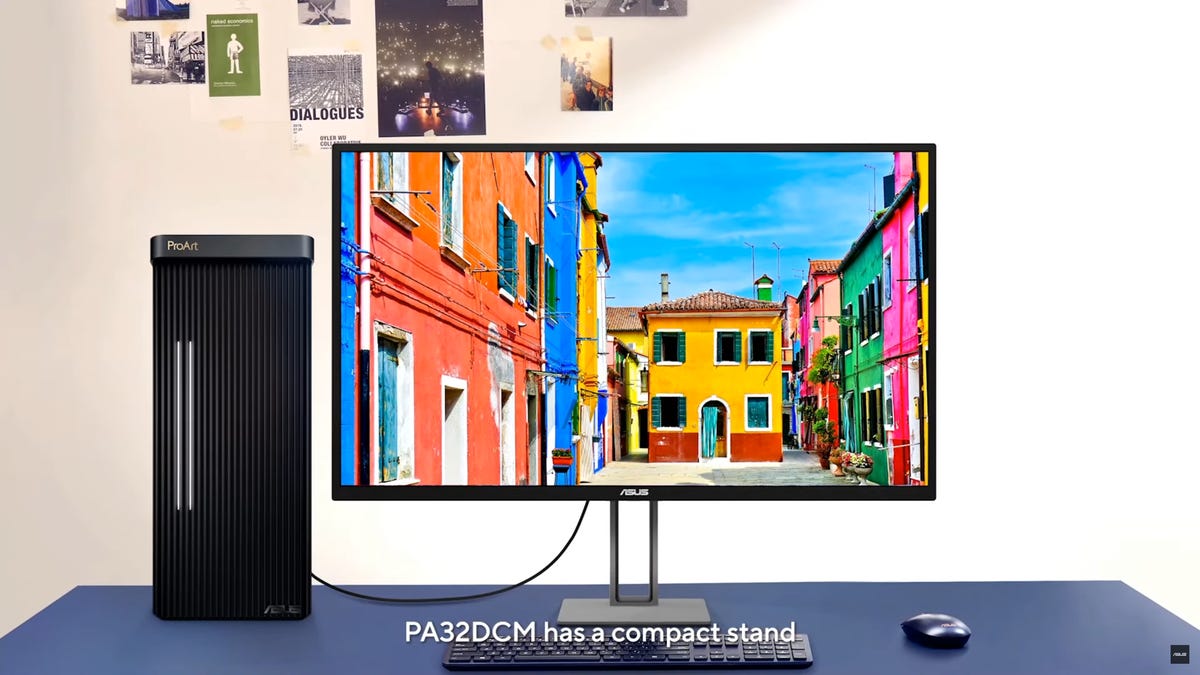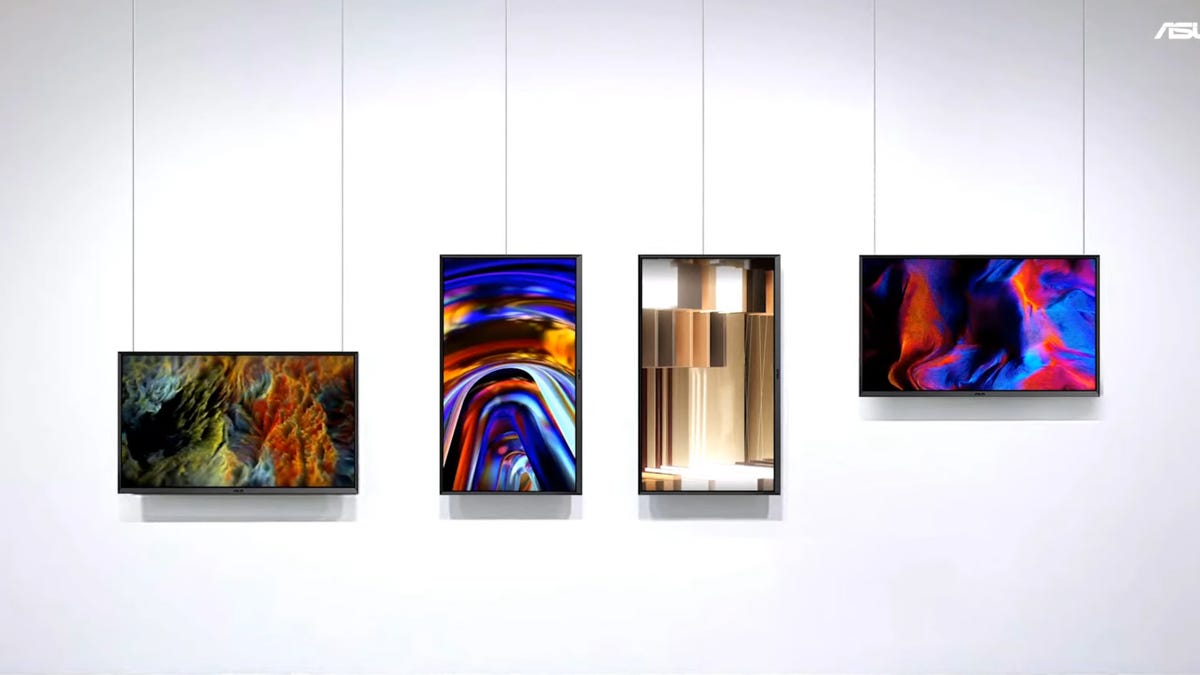
Asus/Screenshot by Lori Grunin/CNET
![]()
While OLED desktop monitors are finally becoming more commonplace, models for professionals haven’t gained quite as much traction. And I mean for professional graphics professionals, for whom color accuracy is more than just a nice thing to have and who need tools to help enforce color accuracy and consistency, even across multiple locations. That’s who the Asus ProArt PA32DCM 32-inch pro OLED display is intended for.
It’s a 4K monitor with the usual OLED characteristics, including purer color rendering, high contrast and full P3 color gamut coverage. Asus claims color accuracy of Delta E less than 1, though averages of the color errors without context don’t tell you much. Among the connectors (Asus didn’t provide details) it has a Thunderbolt 4 port. It’s rated for 700 nits peak brightness in a 10% window for HDR, so it’s probably not the best option for bright HDR video mastering, but as with Delta E specs, the peak brightness spec doesn’t provide much information without context.


Like HP’s DreamColor line, the display includes software for both calibrating the monitor as well as to sync and manage color calibration across multiple locations, as long as they’re all equipped with the PC32DCM. ProArt Color Center allows you to schedule and run calibration sessions remotely as well. Asus seemed to imply that you didn’t need to use a specific colorimeter or that you use the same colorimeter across locations. Presumably, the monitor stores the calibrated profiles in hardware as it does with other high-end ProArt models. It’s not clear what reference profiles it comes with, though.
The downside of the proprietary color management tools is that they’re not so good in mixed environments — that’s when standardizing on a third-party application may make more sense.
And it also looks beautiful, at least on paper (gimme, gimme). It’s relatively thin and clean looking with a simple stand, but it has a bar that runs across the back that allows you to mount it horizontally or vertically on a wall like a picture frame or even attach it to the wall of your cubicle. All monitor marketing materials show them magically operating without cables, so it’s not clear where they connect or how unsightly they might make the setup. Also, from a practical standpoint, you lose the convenience of a standard VESA mount.
Price and availability are unavailable.
Read more: Best Monitors We Tested in 2022
